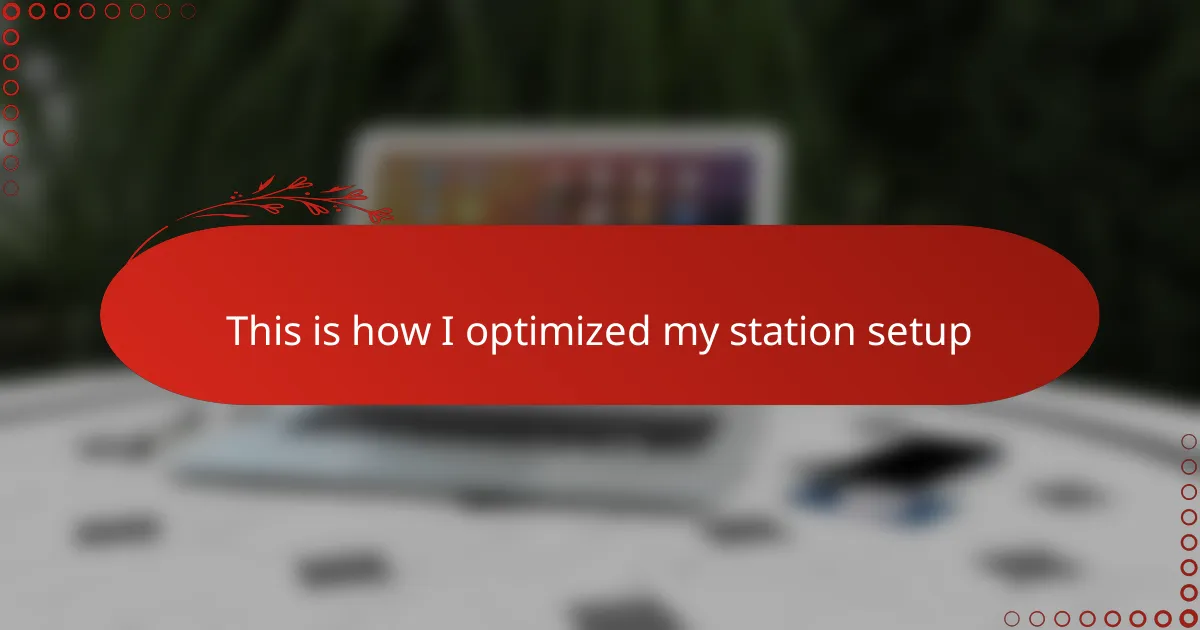Key takeaways
- Understanding the role of each radio station component—transmitters, mixers, and microphones—is crucial for achieving high sound quality and reliable broadcasts.
- Organizing your workspace and personalizing equipment layout enhances workflow efficiency and reduces stress during live shows.
- Regular station maintenance, gathering listener feedback, and being open to new tools and updates are essential for ongoing improvement and success.
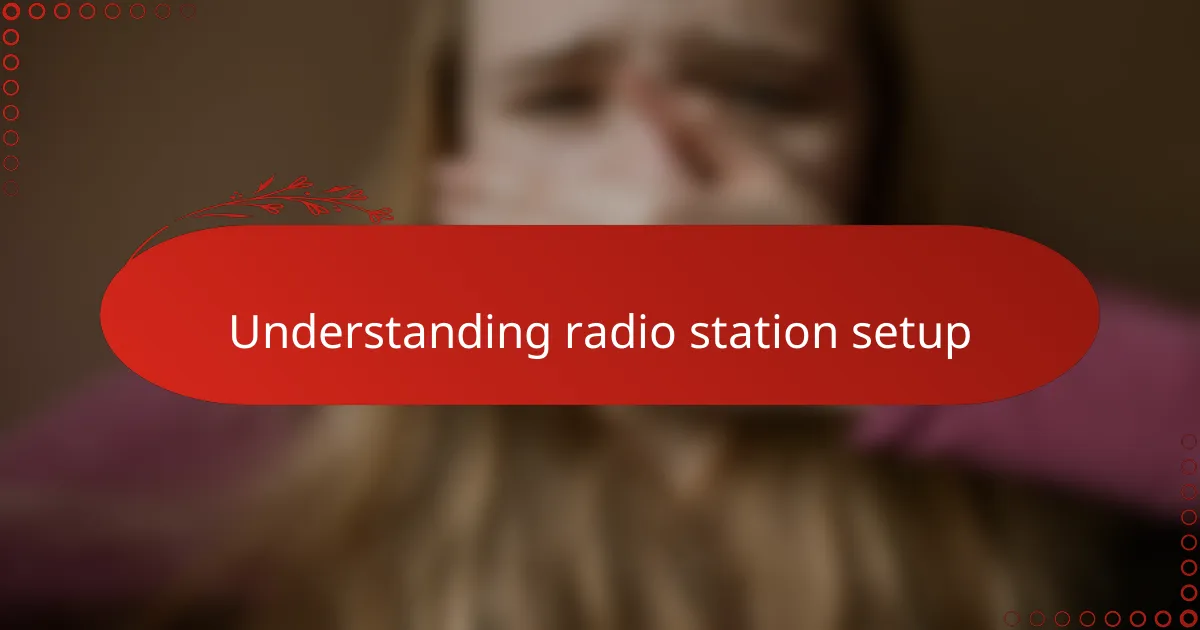
Understanding radio station setup
When I first looked at my radio station setup, I realized it was more than just plugging in equipment; it was about creating a seamless workflow that supports creativity and reliability. Have you ever felt overwhelmed by all the technical gear and wondered where to even begin? Understanding the core components—transmitters, mixers, microphones, and software—turned that confusion into clarity for me.
What struck me most was how every piece of equipment influences the sound quality and broadcast consistency. I remember experimenting with different microphone placements and hearing a tangible difference in voice clarity, which made me appreciate the subtleties of setup even more. It’s not just about having the best gear but knowing how each element interacts.
Setting up a radio station is like fine-tuning an orchestra; everything must harmonize perfectly. This mindset helped me approach my setup with intentionality rather than frustration. How can you expect smooth broadcasts if you don’t truly understand the role each component plays? That realization shaped the foundation of my entire optimization process.
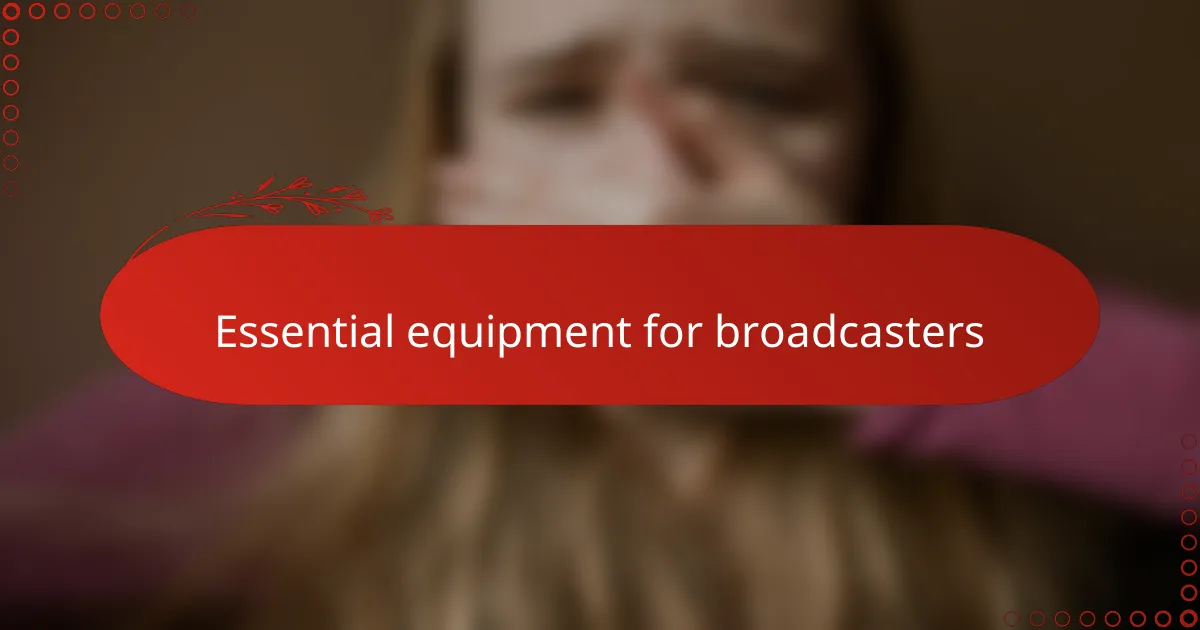
Essential equipment for broadcasters
Choosing the right microphone was a game changer for me. I went through several models before settling on one that captured my voice with warmth and crispness. It made me realize that, for broadcasters, the microphone isn’t just a tool—it’s the main bridge between you and your audience.
Then came the mixer, which felt intimidating at first. But once I learned to balance audio levels and control inputs, I understood how essential it is for maintaining a professional sound. Without it, even the best microphone can’t shine, and your broadcast risks sounding uneven or amateurish.
I can’t stress enough how important reliable broadcasting software is in tying everything together. At one point, a simple software glitch nearly cost me a live show, and that taught me the value of user-friendly, stable applications. Have you ever faced last-minute technical hiccups? Trust me, investing in robust software saves you from a ton of unnecessary stress.
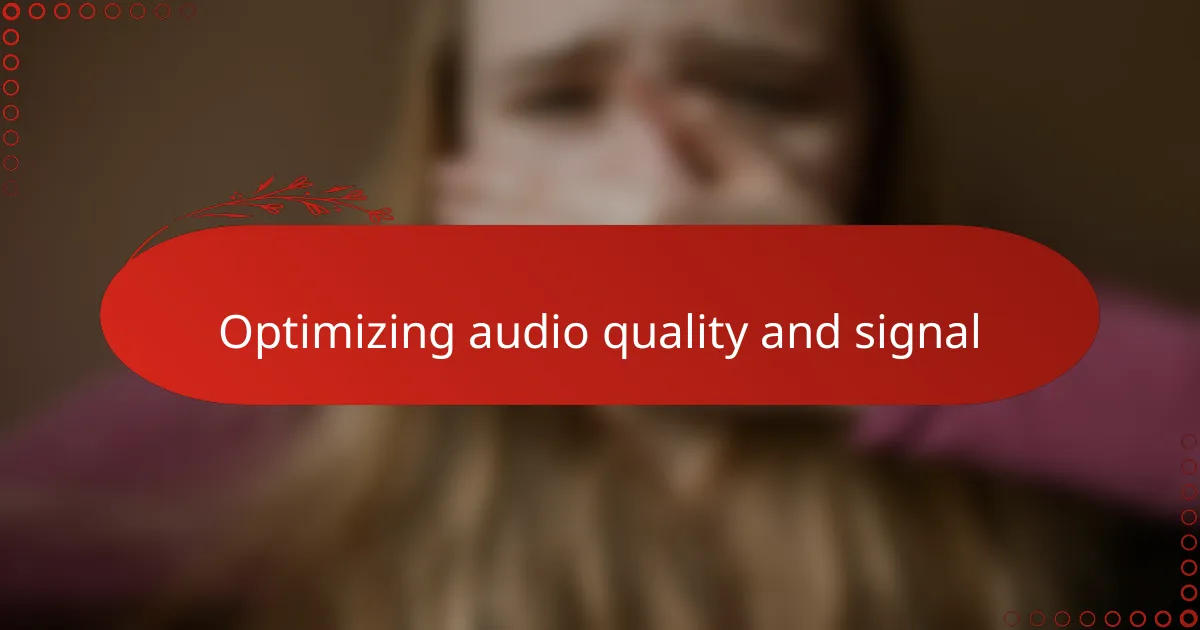
Optimizing audio quality and signal
Optimizing audio quality and signal became a personal mission after I noticed subtle hiss and inconsistencies creeping into my broadcasts. I started experimenting with signal routing and discovered that proper cable management and using balanced XLR cables drastically cut down on interference. Have you ever wondered why some shows sound cleaner than others? Often, it’s these behind-the-scenes tweaks that make all the difference.
I also learned the hard way that monitoring your signal strength in real-time is crucial. There were moments when my broadcast dipped into distortion, and without the right meters and visual feedback, I wouldn’t have caught it before the listeners did. Investing in a good audio interface with clear metering tools helped me maintain consistent levels and avoid that dreaded clipping sound.
One trick that changed everything was fine-tuning my compressor and equalizer settings. Initially, I thought boosting bass and highs would automatically improve quality, but it took careful adjustment and plenty of trial to achieve a natural tone. What surprised me most was how much subtle equalization can enhance clarity without making your voice sound artificial—something every broadcaster should experience firsthand.
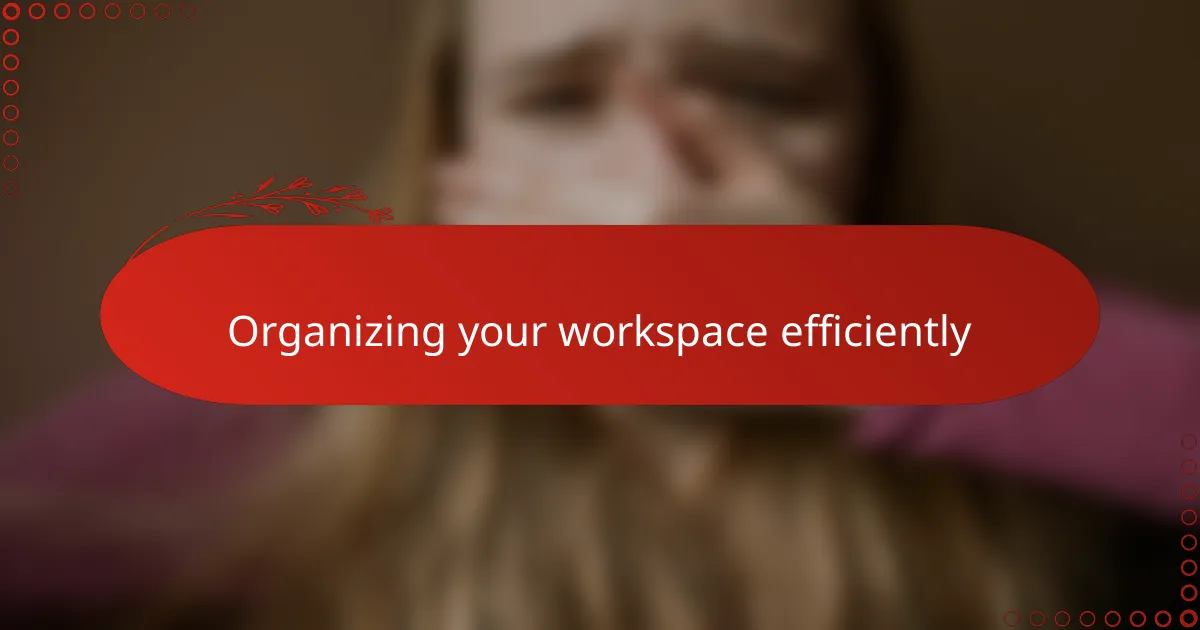
Organizing your workspace efficiently
When I tackled organizing my workspace, I realized clutter was my biggest enemy. Having cables tangled everywhere made finding the right connection feel like a scavenger hunt. So, I invested in cable ties and labeled every wire—simple steps that saved me endless frustration during live broadcasts.
I also rethought the placement of my gear. Instead of spreading everything out, I grouped frequently used equipment within arm’s reach. Have you ever reached for a control knob only to find it buried under a pile of gear? Keeping things ergonomic transformed my workflow, making every action feel natural and efficient.
Finally, I dedicated a spot for notes and quick references, which I hadn’t considered before. It’s amazing how having a clean, organized desk with clearly defined zones can reduce stress and keep creativity flowing. When my workspace feels orderly, my mind follows suit, and the whole broadcast process becomes smoother.
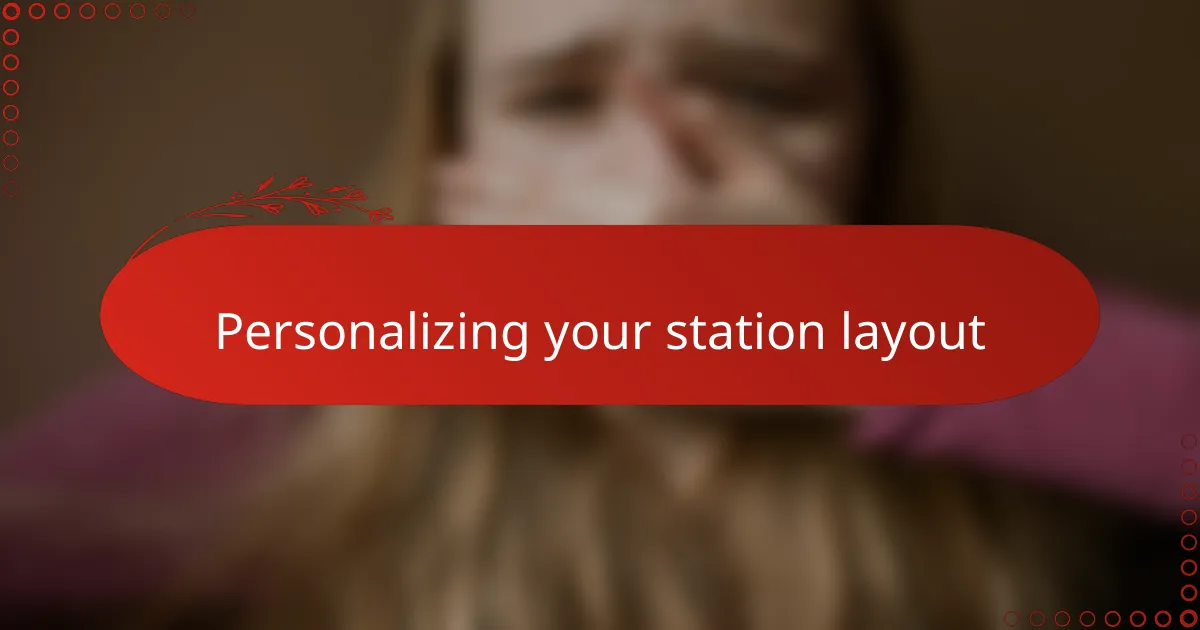
Personalizing your station layout
Personalizing your station layout was a turning point for me—it’s where everything started to feel truly mine. Instead of following a generic setup, I arranged my equipment to match how I work best, placing my mixer and controls right where my hands naturally rest. Have you ever tried using gear that just doesn’t feel intuitive? It’s frustrating, and that’s why tailoring the layout made such a difference in my comfort and efficiency.
I also realized that visual cues matter a lot. Color-coding cables and labeling buttons weren’t just neat tricks—they brought an unexpected sense of calm during tense, live moments. I remember a night when a quick color check helped me fix a routing error in seconds; without it, I might have lost valuable airtime. How often do small details like these save your broadcast day?
Another insight was customizing my listening environment. Adjusting speaker placement and adding acoustic panels weren’t glamorous tasks, but the impact on sound quality was huge. It felt like creating a studio that wasn’t just functional, but inviting—where every broadcast feels like a conversation in a finely tuned room. Doesn’t that kind of space inspire you to sound your best?
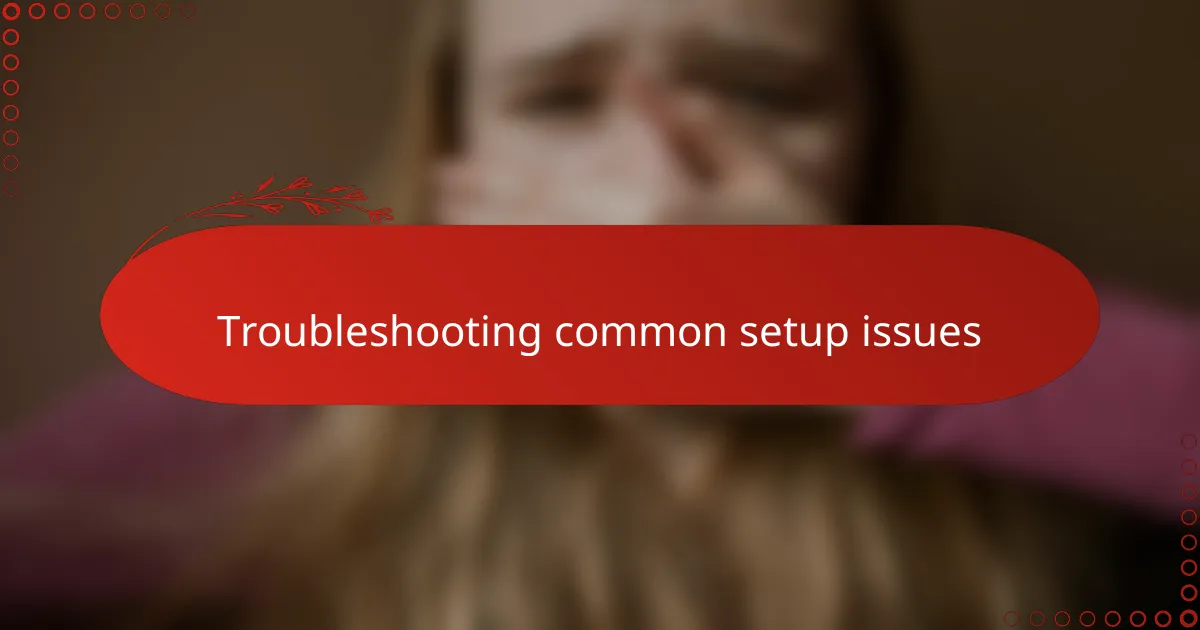
Troubleshooting common setup issues
One of the biggest hurdles I faced was intermittent audio dropouts that seemed to happen for no reason. After digging into cables and connections, I found a loose XLR cable was the culprit—something so simple, yet so easy to overlook. It made me realize how important it is to double-check every connection before going live; have you ever lost precious airtime just because of a tiny oversight like that?
Another common issue is software crashes during broadcasts, which once threw me into a panic mid-show. I learned to always keep backup software ready and to save my settings frequently, so recovery is quick if things go wrong. Maybe it sounds obvious, but having a plan B in place truly saves your sanity and the show’s continuity.
Feedback and interference also gave me headaches initially. Turning down gain levels and repositioning antennas helped, but what really changed the game was adding ferrite beads to cables to reduce noise. It’s fascinating how small tweaks can resolve persistent problems that initially felt insurmountable, right? Troubleshooting taught me patience and attention to detail more than any other part of this setup journey.
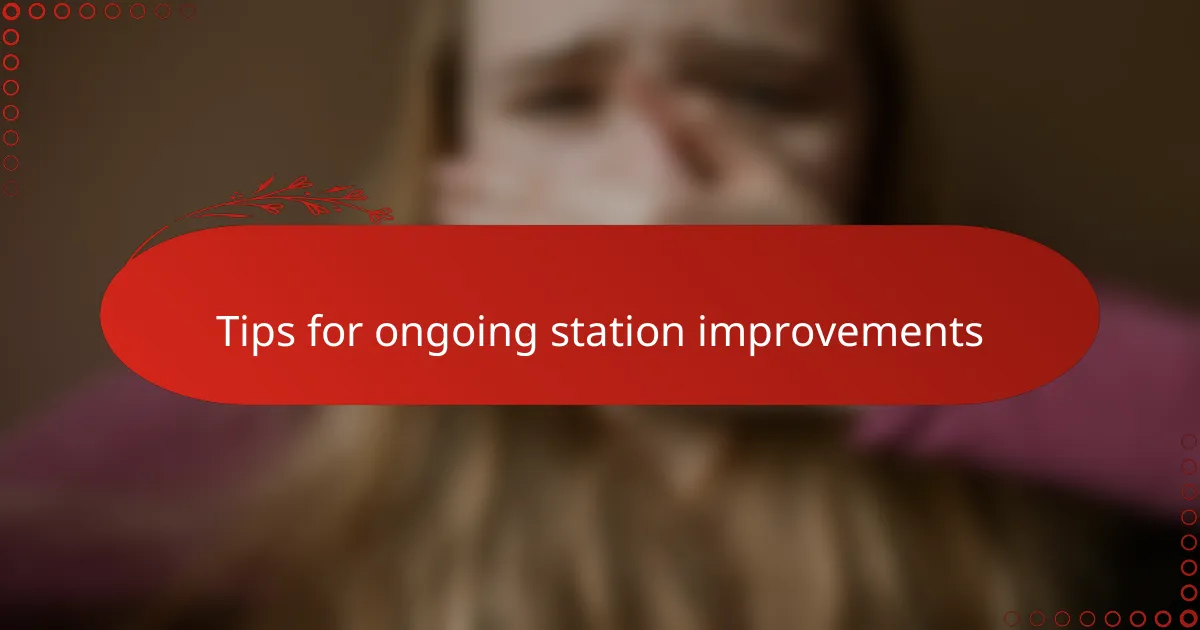
Tips for ongoing station improvements
One tip I learned early on is to schedule regular station checkups, just like you’d service a car. I used to ignore minor hiss or glitches, thinking they’d go away, but they never did. Have you noticed how small audio issues tend to snowball if left unchecked? Staying proactive with maintenance keeps your broadcasts crisp and worry-free.
Another ongoing improvement I swear by is gathering listener feedback. Sometimes, I’m so focused on technical perfection that I forget the human on the other end. Asking for honest opinions helped me spot issues I couldn’t hear myself—like inconsistent volume levels or confusing transitions. Don’t underestimate the power of your audience’s perspective; it’s invaluable for continuous growth.
Finally, never stop learning new tools and software updates. I recall a time I hesitated to upgrade my mixer’s firmware, fearing it might disrupt my workflow. But diving into new features unlocked efficiencies I hadn’t imagined. Are you resisting change out of comfort, or embracing it to elevate your station? Keeping curiosity alive is what drives ongoing improvements in broadcasting.
